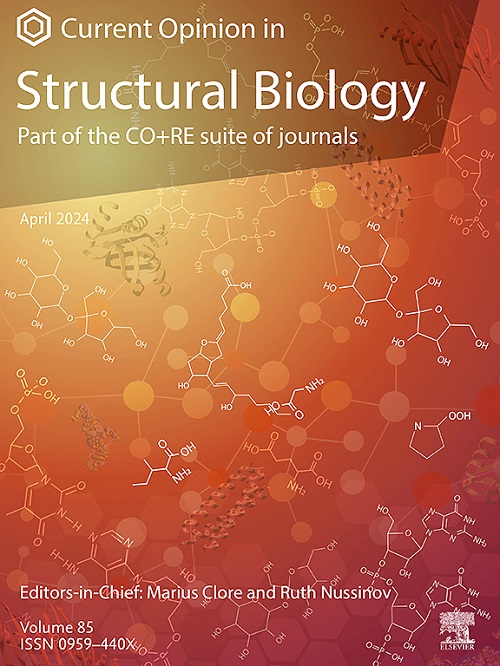Emerging paradigms in the lateral and transverse organization in biological membrane and their functional implications: Connecting the dots with biomolecular simulations
IF 6.1
2区 生物学
Q1 BIOCHEMISTRY & MOLECULAR BIOLOGY
引用次数: 0
Abstract
Since the publication of the first papers in the early 1990s, molecular simulation as a reliable biophysical tool in the area of membrane biophysics has come a long way. Advances in simulation algorithms, coupled with exascale computing have pushed the size and time scales of biomolecular membrane simulations to scales where connections to experiments are made with higher fidelity. When integrated with experimental data in a theoretically well-grounded manner, current biomolecular simulations are providing indispensable insights that cannot be obtained through experiments alone. Here, I summarize some recent developments where simulations have allowed a deeper understanding in membrane spatiotemporal organization. I also discuss the need for transformative method developments to meet recent breakthroughs in experimental measurements at molecular scales.
生物膜横向和横向组织的新范式及其功能含义:用生物分子模拟连接点
自20世纪90年代初第一批论文发表以来,分子模拟作为一种可靠的生物物理工具在膜生物物理学领域取得了长足的发展。模拟算法的进步,加上百亿亿次计算,已经将生物分子膜模拟的大小和时间尺度推向了更高保真度的实验连接尺度。当以理论上有充分根据的方式与实验数据相结合时,当前的生物分子模拟提供了仅通过实验无法获得的不可或缺的见解。在这里,我总结了一些最近的发展,其中模拟允许对膜时空组织有更深的理解。我还讨论了变革方法发展的必要性,以满足最近在分子尺度上实验测量的突破。
本文章由计算机程序翻译,如有差异,请以英文原文为准。
求助全文
约1分钟内获得全文
求助全文
来源期刊

Current opinion in structural biology
生物-生化与分子生物学
CiteScore
12.20
自引率
2.90%
发文量
179
审稿时长
6-12 weeks
期刊介绍:
Current Opinion in Structural Biology (COSB) aims to stimulate scientifically grounded, interdisciplinary, multi-scale debate and exchange of ideas. It contains polished, concise and timely reviews and opinions, with particular emphasis on those articles published in the past two years. In addition to describing recent trends, the authors are encouraged to give their subjective opinion of the topics discussed.
In COSB, we help the reader by providing in a systematic manner:
1. The views of experts on current advances in their field in a clear and readable form.
2. Evaluations of the most interesting papers, annotated by experts, from the great wealth of original publications.
[...]
The subject of Structural Biology is divided into twelve themed sections, each of which is reviewed once a year. Each issue contains two sections, and the amount of space devoted to each section is related to its importance.
-Folding and Binding-
Nucleic acids and their protein complexes-
Macromolecular Machines-
Theory and Simulation-
Sequences and Topology-
New constructs and expression of proteins-
Membranes-
Engineering and Design-
Carbohydrate-protein interactions and glycosylation-
Biophysical and molecular biological methods-
Multi-protein assemblies in signalling-
Catalysis and Regulation
 求助内容:
求助内容: 应助结果提醒方式:
应助结果提醒方式:


